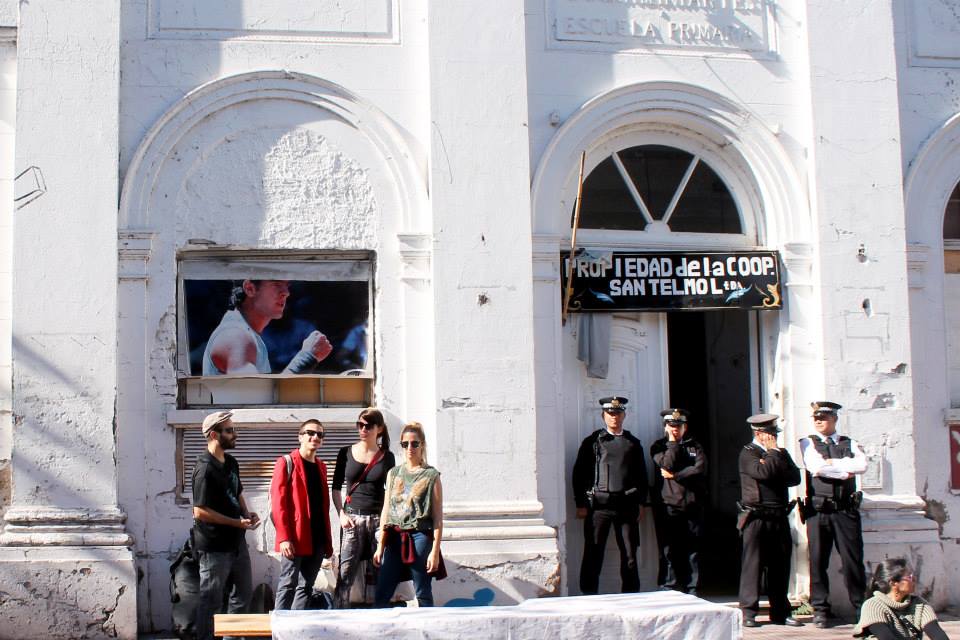
Faca
How to Start a Revolution with Art
PREV
Photography: La Sin Futuro, David Angel, Vera Raquel, Marcelo Petrazzini, Juan Martín Cat, Marcelo Petrazzini, Belén Messina, Vibeke Harper.
Text: Cocó Muro
The intention was clear from the very beginning: “to generate a revolution, not with violence but with actions that provoke a mood of celebration," says Mariel Breuer, the curator of FACA, a huge art show placed in an abandoned building in San Telmo -maybe our Montmartre- that used to be an orphanage.
The story of the building that used to be an orphanage and is now the cathedral of street art is far more interesting to sum it up in a few lines, but it goes like this: Padelai was founded in 1892 as a philanthropic institution and its mission was to provide shelter for homeless and vulnerable children during war periods in Europe. Between 1880 and 1950, many immigrants came to Argentina looking for jobs and future and some of those were little children that met Buenos Aires throughout the windows of this building in San Telmo.
After decades, the religious congregation that ran the orphan abandoned the place in 1970 and the buildings were transferred to the City of Buenos Aires. The authorities didn’t give a damn, so during the next decade, the Padelai was occupied by families and people who didn’t have a place to sleep.
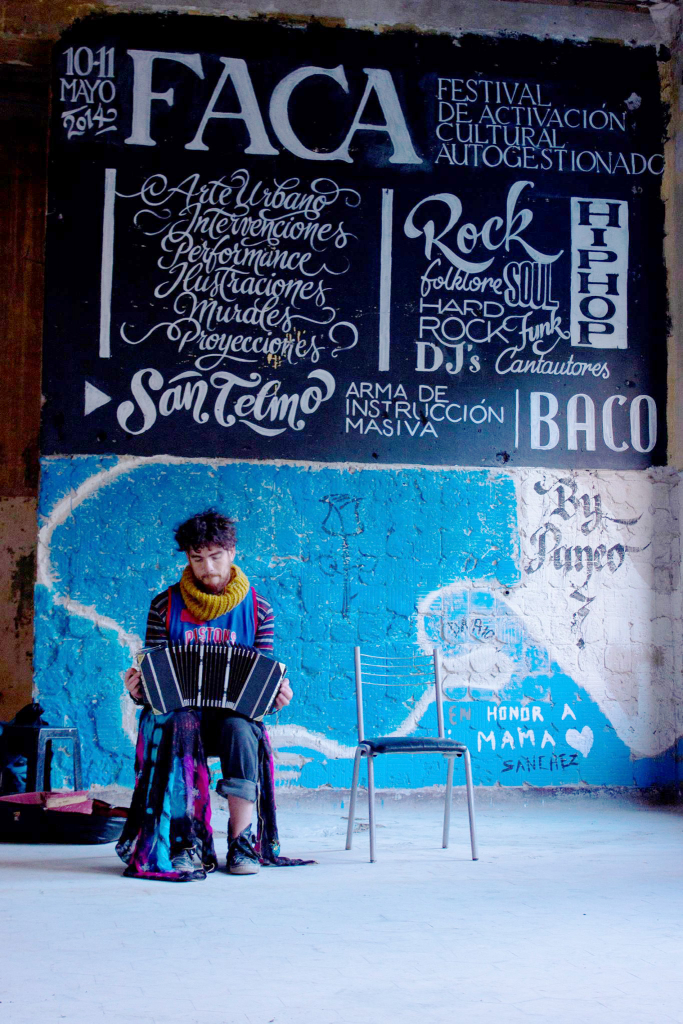
Despite the fact the Padelai was made to provide shelter, it became the focus of a long dispute between politicians and real estate interests which continues even today.
FACA is an acronym that means Festival de Activación Cultural Autogestionado, it’s a Festival to active culture, arts and interaction between the 40 families that live in the Padelai and San Telmo’s neighbours, and -of course- people who enjoy art shows.
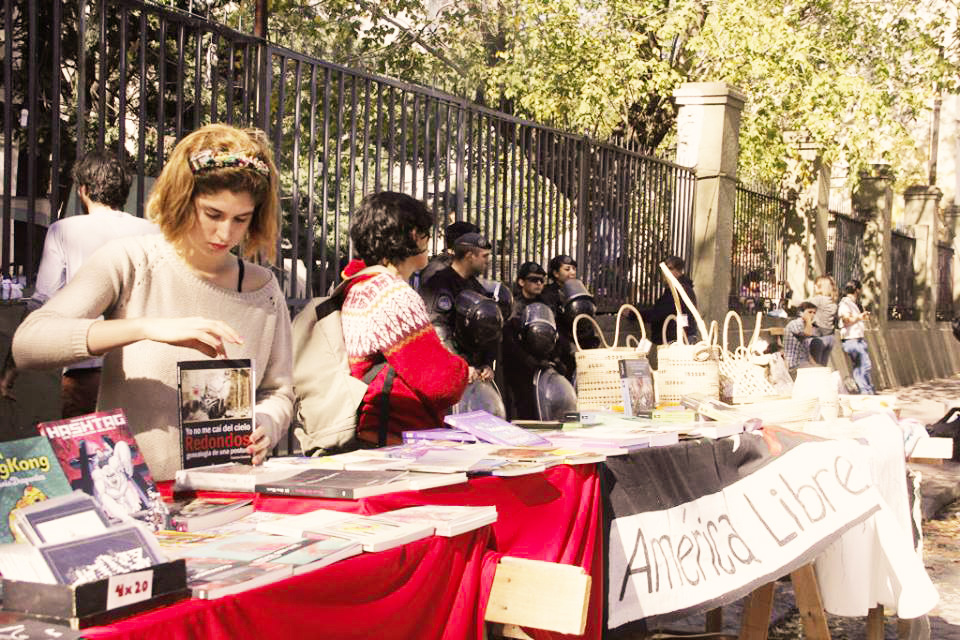
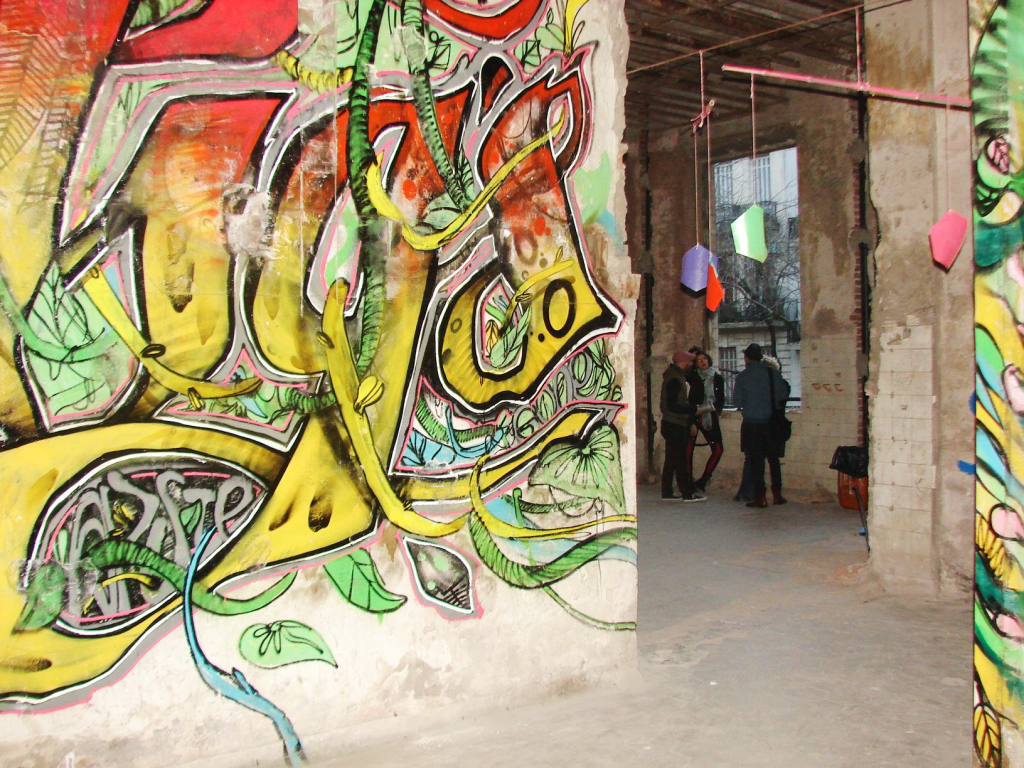
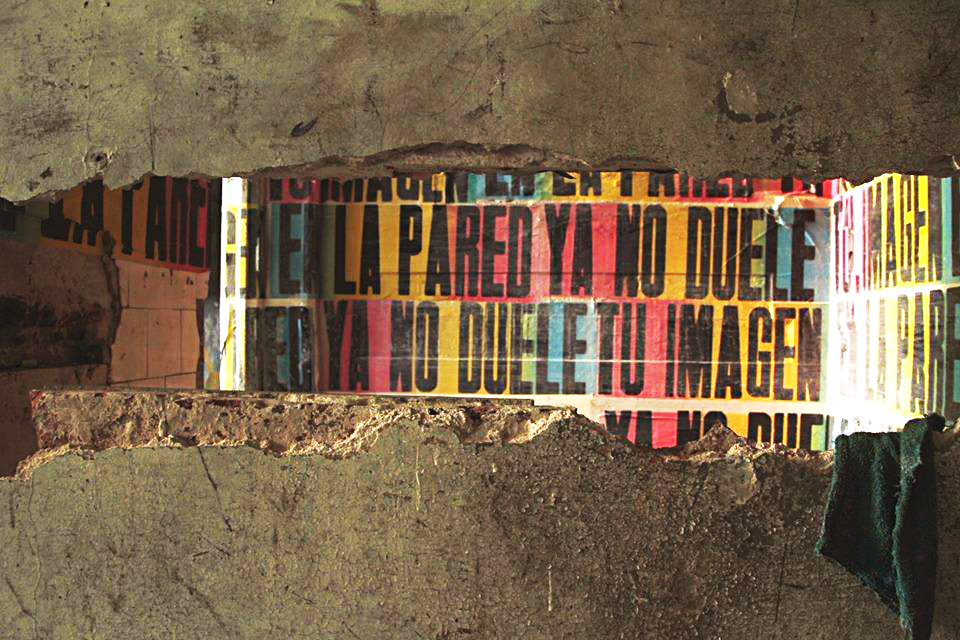
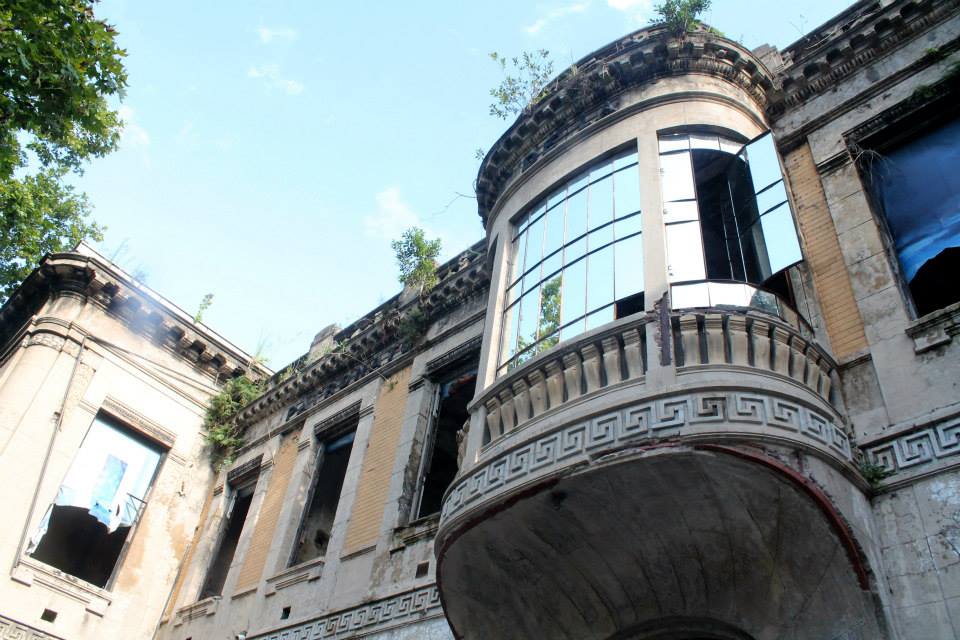
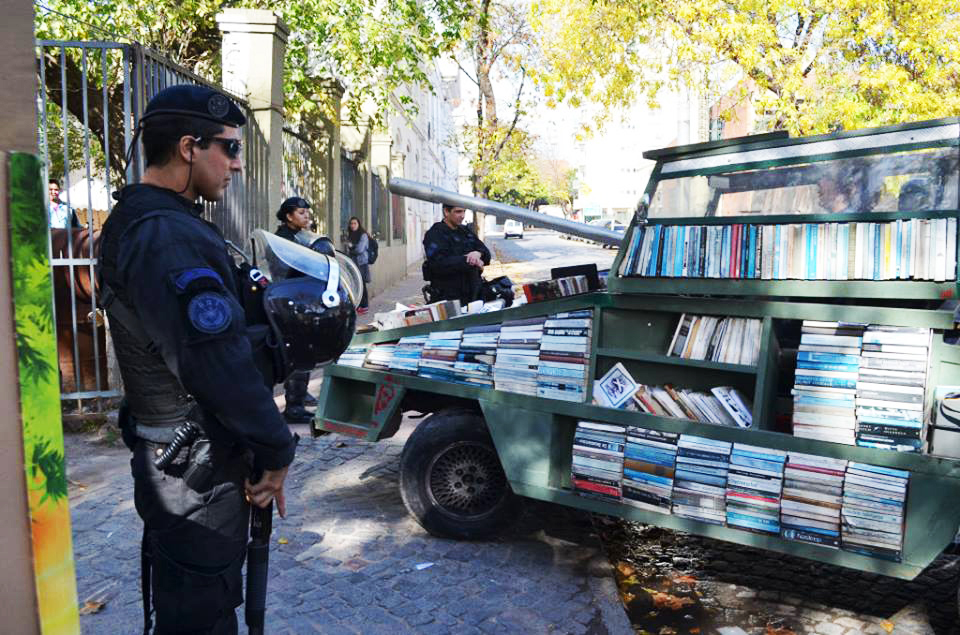
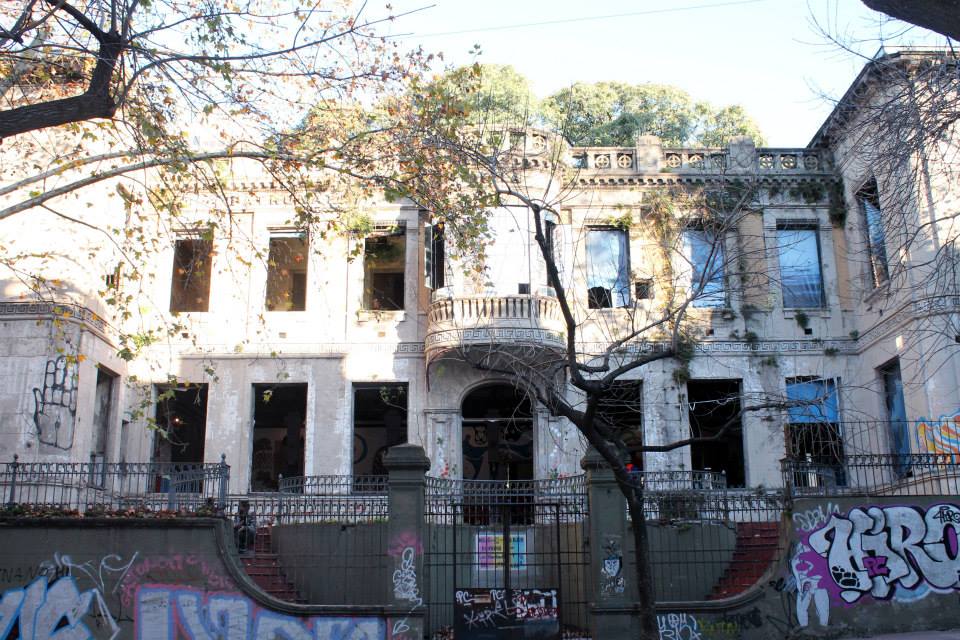
They worked all together for almost four months and when they were ready to open to the public, the Metropolitan Police decided it was not the time. 36 artists, 20 bands, playing live, a book fair, the area filled with vegetarian food stalls, discs, handicrafts, a big party for the public and all the ones involved in the project… but they all had to go home and wait for permission to stay and show their work.
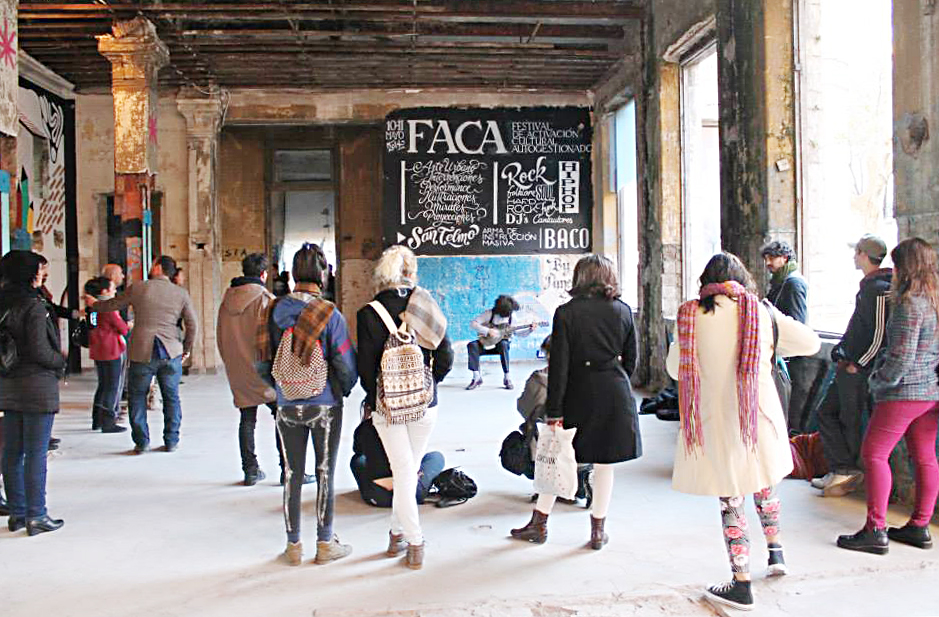
“The impossible just takes a little longer,” wrote Mariel the day FACA was interrupted, and she promised: “The police refused the public entry but the work was done (the cleaning and recovery of the old building and the involvement of more than 40 artists) and we will show what was done.”
Yes, it took a little longer but her promises were fulfilled. Finally, on July 14th, FACA could open and people were able to see the works of Malatesta, Martín “Roma” Privitera, Carolina Favale, Yaya Firpo, David Maruchniak, Cabaio, La Sin Futuro, Thg Crew, Panco Sassano, Nacho Fabio, Franco Basualdo, Marcos Mangani, Sergio Lamanna and many others who turned the building into the Sistine Chapel of street art.
Nowadays, people can visit the art show every Sunday and confirm the fact that these walls are doing all the talking, and they are saying something about a revolution.
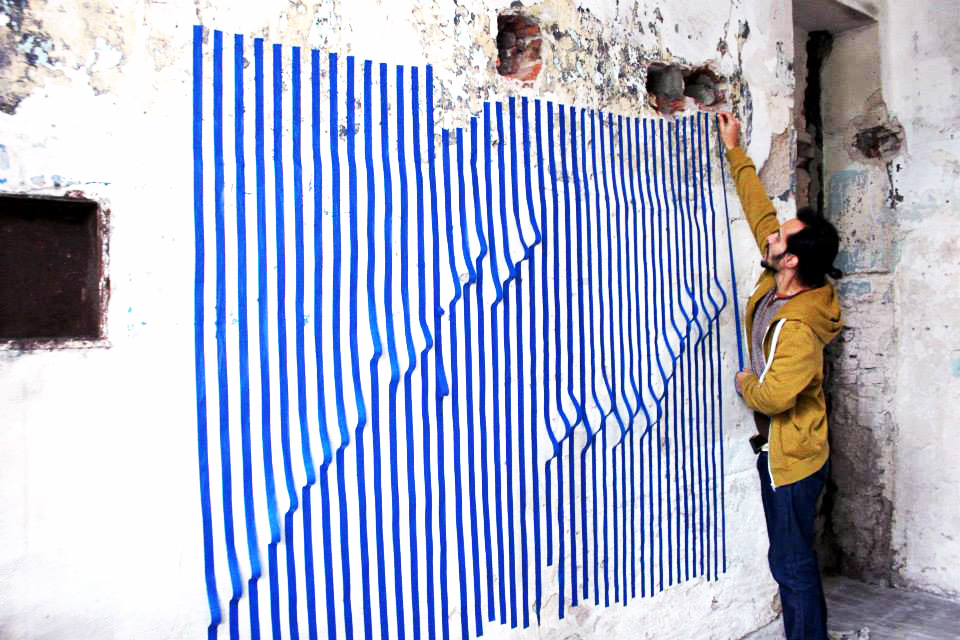
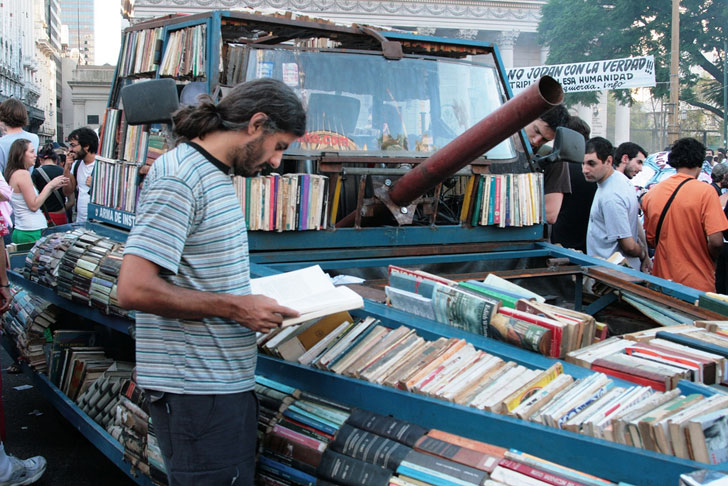
Merken
Merken
FACA
HUMBERTO PRIMO 250
1103 BUENOS AIRES
BETWEEN BALCARCE AND PASEO COLÓN.

